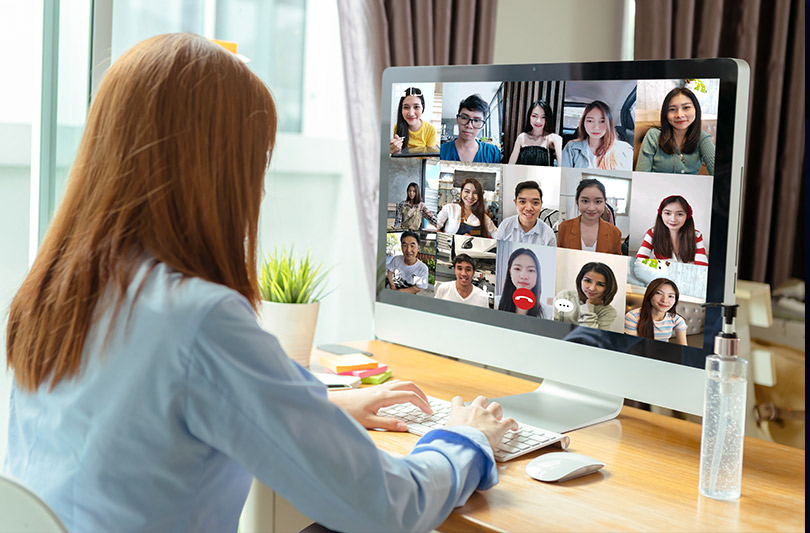Long-term Remote Workforce Strategy and Why You May Need One

Implementing a video conferencing tool as part of your long term remote workforce strategy helps maintain business continuity and keeps employees connected.
Without being able to pinpoint when the COVID-19 pandemic will end or when it will be entirely safe to return to an office environment, having a long-term remote workforce strategy is an important exercise. As a short-term plan, we learned how to keep ourselves protected, and adjusted to living and working under quarantine.
Some workforce studies are showing that many employees would prefer not to return to the traditional office setting. This sentiment may change if the need for physical distancing decreases and or a vaccine becomes readily available. Now is a good time to assess how effective your short term plan has been and what changes you may need to make to expand it for the long term.
Maintaining business continuity is critical of course, and so is staying connected to employees. To reduce feelings of professional and personal isolation, maintain your meeting schedule and structure, include time for personal check-ins, and respond quickly to requests for technical assistance.
“We have adopted a scrum meeting format, traditionally used for our development team, across marketing, design and strategy as well,” said 5D Spectrum founder De Ivett. “It is a great way to start every day and keep in touch with our remote team.”
Business priorities for working remote:
- implement a video conferencing tool that serves your company’s needs
- adopt asset-sharing and communication technology (i.e. cloud systems, digital phone service)
- invest in your IT department to ensure timely technical support will help to keep things running smoothly
- Upgrade your network security and to identify any vulnerabilities that should be addressed immediately
Video conferencing – Collaboration friend or foe?
While it may have been an occasional practice to video conference with clients or experts, it has now become a necessity to manage projects as well as employees. Susan Holguin, Founder, and CEO of audio visual technology company Vizual Symphony, Inc., has observed that collaboration can be stymied by video conferencing because it is easy to hide or be distracted. People can become distracted by cameras being off or even with cameras on.
“The key to effective collaboration is to plan on ways to include all participants,” said Holguin. “It can be as simple as having everyone introduce themselves at the beginning of the call, to asking people to share, participate, rate, etc.”
Small investments that will improve your remote work experience
As you assess your company’s remote workforce productivity, there are investments that even small businesses can afford to make that will greatly improve video conferencing effectiveness. Holguin recommends adding cameras, lighting and wireless gateways for a better experience. She added, “mid to large size businesses will be planning to transform their ‘open flex spaces’ to separated, private spaces. And schools are scrambling to add accommodations for hands free technology, and technology based on using your own device…”
The classroom and lecture hall transformed

As uncertain as the environment is for businesses, the academic world is planning now for how they will educate students come September. Educators must implement the use of recording and streaming technology to present curriculum, either from home or a room on campus, while also anticipating the challenges students may face.
From Vizual Symphony’s experience standardizing technology in university classrooms, Holguin recommends prioritizing the quality and flexibility of the recording or stream. “Lecture capture will play a bigger role as recording and streaming presentations and content will become the ‘given’. This could be as simple as recording a Zoom call and distributing to the class or providing video content that is available on demand, is searchable by keywords, and layout can be adjusted to meet the way the student learns best.”
Need help working with your team remotely?